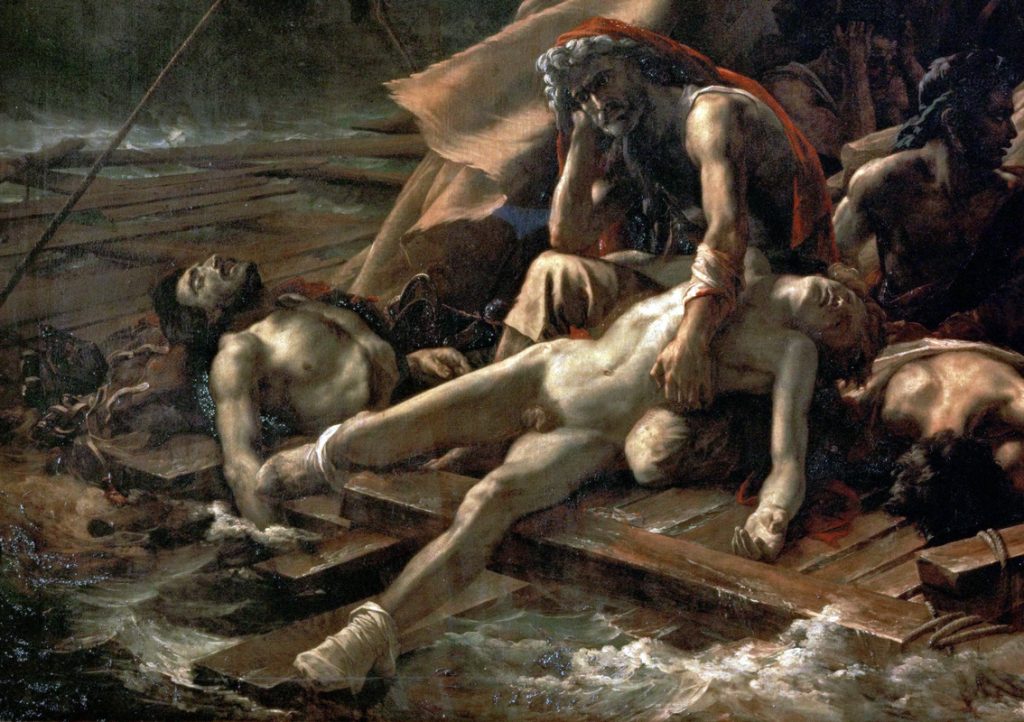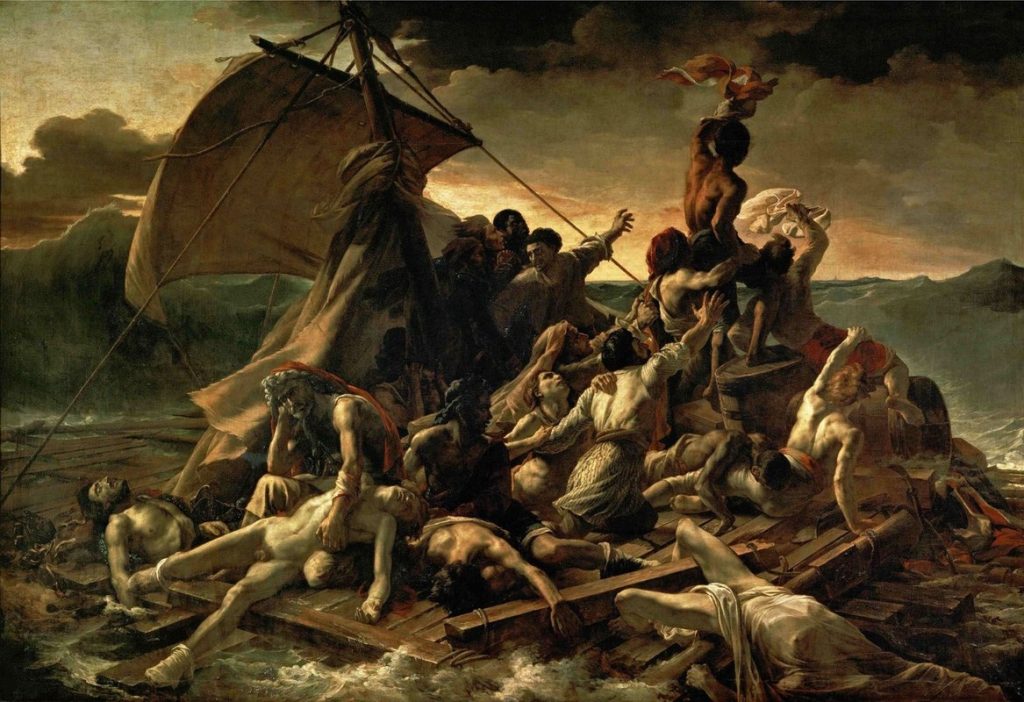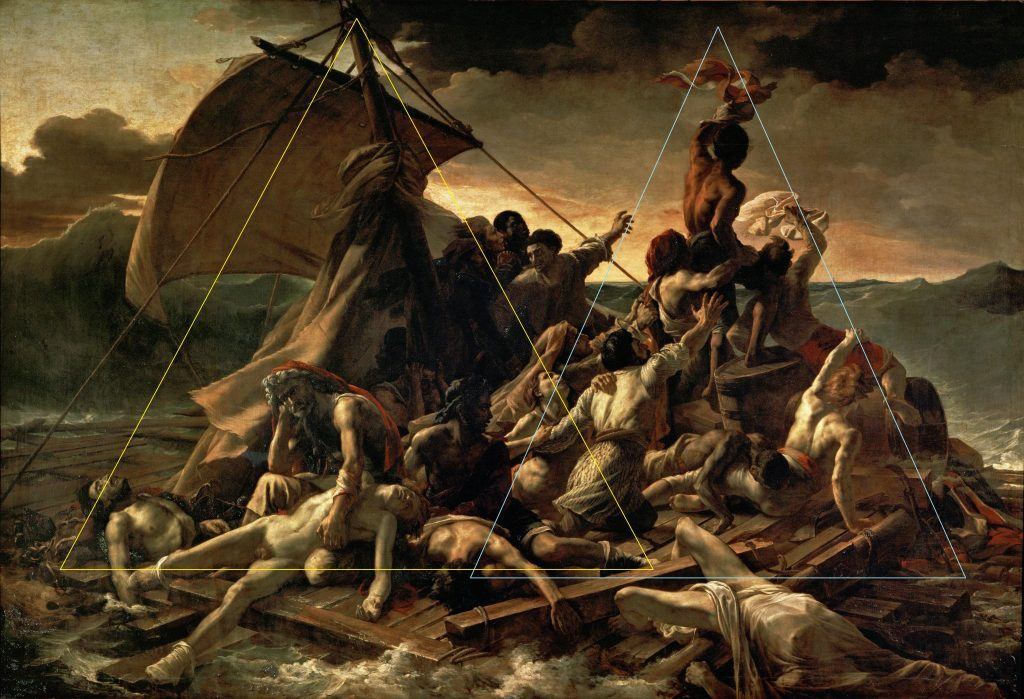The story behind
The story of the French naval ship “Méduse” (Medusa) is a haunting tale of tragedy, survival, and scandal that left a deep mark on French history and art. In 1816, during the post-Napoleonic Restoration period, the Méduse was part of a convoy sent by France to reclaim the colony of Senegal from the British. The voyage should have been routine, but led to disaster.


The Méduse, a frigate, was commanded by Captain Hugues Duroy de Chaumareys, a man with noble connections but little seafaring experience. Despite this lack of qualification, he was appointed by the royalist government due to his loyalty. The captain’s incompetence and poor judgment would soon lead the Méduse into catastrophe.
The trouble began when Chaumareys, eager to reach Senegal quickly, sailed ahead of the other ships in the convoy. Disregarding warnings from more experienced officers and the ship’s crew, he took a dangerous course along the coast of Mauritania. On July 2, 1816, the Méduse ran aground on the infamous sandbank called the Banc d’Arguin, near the West African coast. The ship was stranded, and with no easy way to dislodge it, panic set in among the crew and passengers.
Disaster and Horror
With the ship slowly disintegrating, the crew and passengers devised a plan to abandon it. The officers and first-class passengers took to the few available lifeboats. However, there were not enough boats to accommodate all 400 people on board. For the 147 passengers left behind, the crew hastily constructed a large makeshift raft, approximately 20 meters long. The plan was for the lifeboats to tow the raft to safety, but in a shocking act of cowardice, the officers abandoned the raft in open water. The people on the raft were left to drift helplessly, fighting for survival.
What followed was a horrific ordeal that would last for thirteen days. Starving, dehydrated, and exposed to the elements, the survivors quickly turned to violence and chaos. Desperation set in as people fought for rations, threw weaker individuals overboard, and ultimately resorted to cannibalism. The raft carried the survivors to the frontiers of human experience. Crazed, parched and starved, they slaughtered mutineers, ate their dead companions and killed the weakest!
By the time a rescue ship finally spotted the raft, only 15 of the original 147 passengers were still alive. The others had been killed or thrown overboard by their comrades, died of starvation, or had thrown themselves into the sea in despair.
The Painting
The Raft of the Medusa ( originally titled Scène de Naufrage (Shipwreck Scene) – is an oil painting of 1818–19 by the French Romantic painter and lithographer Théodore Géricault.
Completed when the artist was 27, the work has become an icon of French Romanticism. The painting is on a monumental scale of 491 cm × 716 cm (193 in × 282 in), so that most of the figures rendered are life-sized and those in the foreground almost twice life-size, pushed close to the picture plane and crowding onto the viewer, who is drawn into the physical action as a participant.
Géricault was captivated by the story, and his painting depicted the agony, despair, and desperation of the survivors. The painting, with its realistic portrayal of suffering, became an iconic image of human endurance and horror. Géricault’s work also served as a powerful critique of the French government, subtly condemning the incompetence that led to such suffering.

Consequences
The tragedy of the Méduse sent shockwaves through France. The public was outraged not only by the incompetence and cowardice of the officers but also by the broader implications of a government that prioritized loyalty over skill in critical appointments. The incident became a symbol of corruption and decay within the French monarchy, sparking debate and criticism.
The story of the Méduse is a sobering reminder of the disastrous consequences that can arise from incompetence and misplaced priorities. Its impact resonated far beyond the shipwreck itself, inspiring art and igniting a conversation about responsibility, leadership, and morality.
